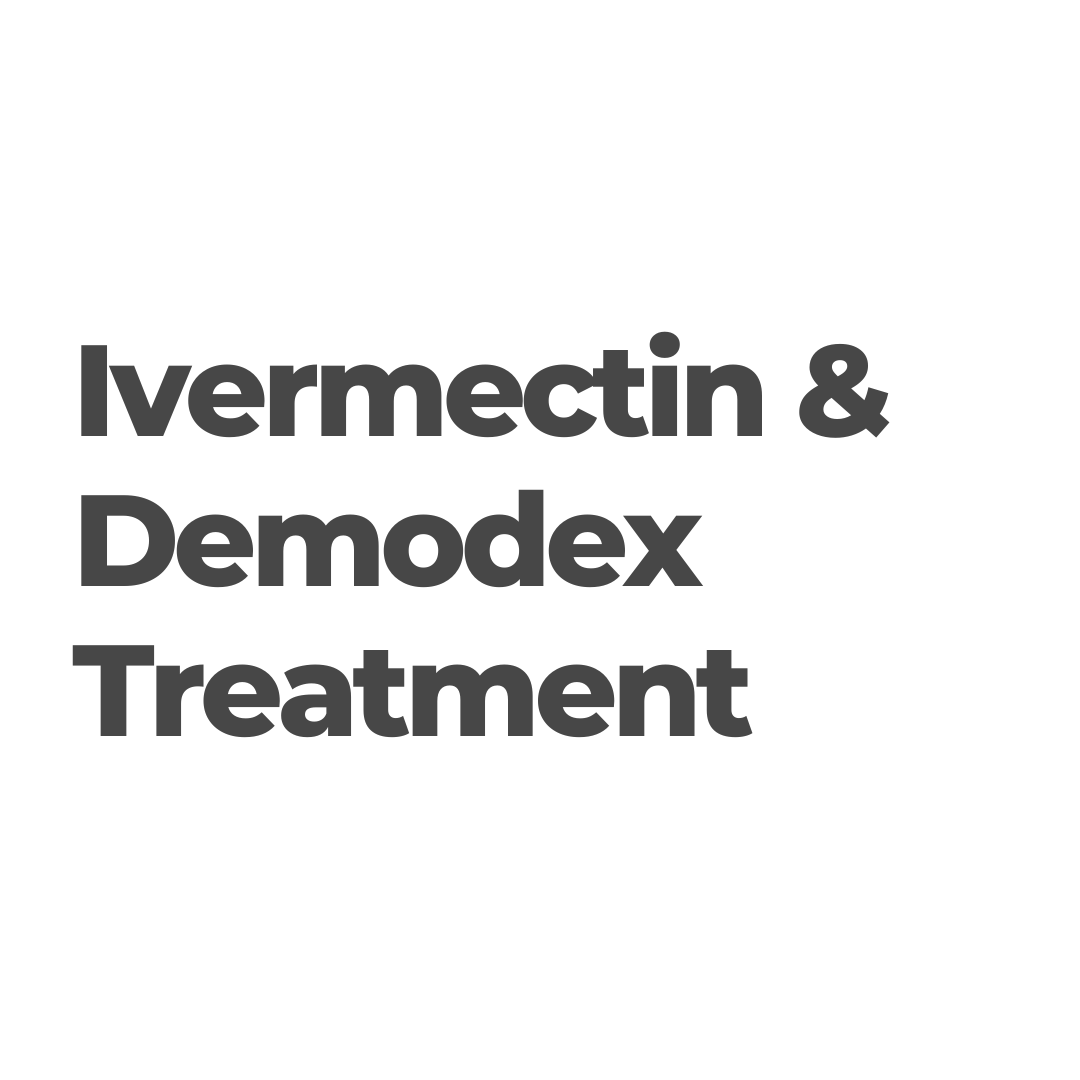This blog provides a concise summary of a 53-page research article focusing on dry eyes and common eye cosmetic procedures. It is important to note that this summary does not cover all cosmetic procedures, particularly those unrelated to dry eyes, due to space limitations.
For a more comprehensive analysis of each point discussed in this summary or information on other cosmetic procedures involving the eyes, please refer to the full research article linked below. The purpose of this blog is not to discourage the use of products containing the mentioned ingredients or cosmetic procedures, but rather to raise awareness and promote mindfulness regarding the potential risks associated with using cosmetics around the eyes. If you are experiencing dry eyes, it is crucial to consider the following cosmetics and their potential effects on your eyes.
❗ Whether you are using eye cosmetics for personal use, for your family, friends, or even patients, we highly recommend referring to our eye cosmetic cheat sheet for valuable information.
Preservatives
Preservatives are added to cosmetics to prevent bacterial, fungal, yeast, and mould contaminations. However, some of these preservatives can have adverse effects on the ocular surface and contribute to dry eye disease.
Benzalkonium chloride (BAK):
BAK is a widely used preservative in both cosmetics and topical ophthalmic solutions. Despite its common use, studies have shown that even low concentrations of BAK can be toxic to ocular surface cells, including corneal, conjunctival, and meibomian gland epithelial cells. In addition to cell toxicity, BAK has been associated with tear film instability, goblet cell loss, and other ocular surface abnormalities. Prolonged use of BAK-containing products may lead to symptoms of dry eye disease and other ocular complications.
Formaldehyde-releasing compounds:
Certain compounds, such as DMDM-hydantoin and quaternium-15, release formaldehyde gradually at room temperature. Despite being approved for cosmetic use at specific concentrations, research indicates that even lower concentrations of formaldehyde can be toxic to ocular surface cells. Formaldehyde has also been classified as a carcinogen, raising concerns about its long-term effects on eye health.
Parabens:
Parabens, including methylparaben and ethylparaben, are commonly used preservatives in cosmetics. However, studies have shown that these preservatives can reduce the survival of meibomian gland epithelial cells and promote the development of meibomian gland dysfunction. Parabens are also known to possess estrogenic properties and may disrupt the endocrine system. Furthermore, there is evidence linking parabens to an increased risk of malignancies, including breast cancer.
Phenoxyethanol:
Phenoxyethanol is a broad-spectrum preservative used in many consumer products. While it is effective against bacteria and fungi, even lower concentrations of phenoxyethanol can decrease the survival of meibomian gland epithelial cells. Phenoxyethanol exposure has been associated with reduced tear film stability and has shown adverse effects on multiple organ systems in various species. Given its potential for harm, it is advisable to avoid phenoxyethanol in products that come into contact with the eyes.
Other Preservatives:
Chlorphenesin, ethylhexylglycerin, methylisothiazolinone, and thimerosal are additional preservatives that may have adverse effects on the ocular surface. These compounds can cause eye irritation, contact dermatitis, and sensitization. Thimerosal, in particular, has been identified as an allergen and a neurotoxin.
Additional Ingredients
Acrylates:
Acrylates are commonly used in cosmetics, such as eyeliner, liquid makeup, mascaras, sunscreens, lipsticks, creams, and lotions. These polymers, derived from acrylic acid, are added to these products due to their film-forming properties. While some acrylates, like polymethyl methacrylate (PMMA), are safe for use in contact lenses, certain acrylates have been classified as possibly carcinogenic to humans and may trigger allergic contact dermatitis.
Carnauba Wax:
Sixty percent of commercial mascaras contain carnauba wax. Derived from the Copernicia Cerifera palm, carnauba wax is widely used in mascaras, eyeliners, and eyeshadows for its emulsifying properties and ability to create a glossy, smooth finish. However, the use of carnauba wax has been associated with the development of eyelid contact dermatitis.
Castor Oil:
Castor oil is a common ingredient in various eye makeup products, including eyelash conditioners, eyeliners, eyeshadows, mascaras, and makeup removers. While it is believed to stimulate eyelash growth, its impact on eyelash cilia and follicles remains inconclusive. Ocular surface exposure to castor oil solutions may cause mild discomfort and potential damage to the corneal epithelial cells.
Cocamide Diethanolamine:
Cocamide diethanolamine is often used as an emollient, thickener, and dispersant in personal care products. While considered an eye irritant, it has been listed as a possible carcinogen. The International Agency for Research on Cancer has categorized both diethanolamine and coconut oil diethanolamine condensate as possibly carcinogenic to humans (Class 2B).
Cocamidopropyl Betaine:
Also derived from coconut oil, cocamidopropyl betaine is a surfactant used in personal cleansers and some contact lens cleaners. However, it has been found to cause contact dermatitis, potentially due to crossover reactions or allergies to related compounds used in its manufacturing process.
Fragrances:
Fragrances, particularly linalool, can cause skin dermatitis when oxidized. Synthetic musks, commonly used in fragrances, have been banned in Europe due to concerns about their impact on cell function and hormone regulation.
Gold:
Gold was listed as the 2001 Contact Allergen of the Year by the American Contact Dermatitis Society. While gold is often marketed as an added benefit in cosmetics, it can cause hypersensitivity reactions. Patch testing has revealed a Type IV hypersensitivity reaction to gold in a significant percentage of patients.
Heavy Metals:
Heavy metals (for example, nickel, lead, arsenic, mercury, zinc, chromium, cobalt, cadmium and iron) are known allergens (i.e., sensitizers), and some are considered toxic such as lead. Certain cosmetics, such as lipsticks and eyeshadows, may contain trace amounts of heavy metals, which can lead to irritation and allergies. Nickel, commonly found in cosmetics and jewellery, is a known allergen, particularly for individuals wearing glasses or with a nickel allergy.
Lanolin:
Lanolin, derived from sheep wool, is used as an emollient in cosmetics. Although considered a lesser sensitizer, it has been associated with periorbital contact allergy when applied to damaged skin.
Nylon:
Nylon is used in cosmetics as a bulking and opacifying agent. While initial research suggested its safety, there have been documented cases of nylon fibres embedding in the ocular surface tissues, leading to inflammation. Contact dermatitis to nylon fibres has also been reported with other products in close proximity.
Phenylethyl Resorcinol:
Phenylethyl resorcinol is commonly used in skin-whitening products due to its ability to reduce melanin content and tyrosinase activity in the skin. Although it is often combined with other whitening agents, such as retinol, disodium glycerophosphate, and l-leucine, it has also been used under the eye for intra-orbital dark circles without negative effects. However, it is important to note that some individuals have reported contact dermatitis when phenylethyl resorcinol is used in cosmetics for skin lightening or as an additive to sunscreen.
Phthalates:
Phthalates are commonly found in cosmetic makeup removers, fragrances, and plastic cosmetic packaging as solvents and plasticizers. These chemicals can unintentionally leach into cosmetics, leading to higher concentrations than approved limits. Phthalates are lipophilic, meaning they have the potential to penetrate the corneal stroma and affect the corneal endothelial cell layer. Studies have shown that certain phthalates, such as dibutyl phthalate (DBP), benzyl butyl phthalate (BBP), and diethylhexyl phthalate (DEHP), can adversely affect the growth and viability of human corneal endothelial cells. Moreover, phthalate exposure has been linked to various health issues, including endocrine disruption, reproductive disorders, cardiovascular disease, early onset of puberty, hepatoxicity, neurotoxicity, and sleep problems. It is worth noting that females tend to have higher exposure to phthalates compared to males. While Europe has banned the use of DBP in cosmetics, the United States has not banned phthalates in cosmetics, except for certain phthalates in children's toys.
Prostaglandin Analogues:
Prostaglandin analogues, such as bimatoprost, were initially developed as topical glaucoma medications but were later discovered to have unexpected side effects, including eyelash elongation and darkening. These effects led to the development of a product called Latisse®, which is approved for the treatment of hypotrichiasis (inadequate eyelashes). However, over-the-counter eyelash growth serums containing synthetic prostaglandin analogues have also become popular. These serums may have similar side effects to Latisse®, such as conjunctival hyperemia, skin or iris pigmentation, itching, eyelash loss or fall, trichiasis, malar hypertrichosis, lowered intraocular pressure, Meibomian gland dysfunction (MGD), and dry eye disease. The safety and tolerability of prostaglandin analogues in over-the-counter eyelash growth serums have not been clinically studied, and many users have reported side effects.
Retinoids:
Retinoids, derived from vitamin A, are widely used in skincare products for their wrinkle-reducing properties. However, one particular retinoid called isotretinoin (13-cis retinoic acid) has been found to have detrimental effects on the health of the meibomian glands. This compound inhibits cell proliferation, promotes cell death, alters gene expression, and triggers inflammation in meibomian gland epithelial cells. These effects are believed to be responsible, at least in part, for the induction of meibomian gland dysfunction, a common contributor to dry eye disease.
Salicylic Acid:
Salicylic acid, commonly used in skincare products to treat acne and dandruff, is a keratolytic agent. However, it should not be applied near the eyes due to the risk of serious allergic reactions, ocular surface toxicity, and chemical burns. Packaging similarities between ocular lubricants and products containing salicylic acid have led to instances of mistaken application, highlighting the need for caution and proper usage to prevent adverse effects on the eyes.
Shellac:
Shellac, derived from the secretions of the lac beetle, is used in eye makeup to bind mascara and emulsify moisturizers. However, there have been reported cases of allergic contact dermatitis resulting from mascara containing shellac. These reactions were confirmed through patch testing, emphasizing the importance of being aware of potential allergens in eye cosmetics.
Talc:
Talc, a common ingredient in cosmetic powders, is known for its silky texture in eyeshadows. Apart from the risk of allergic contact dermatitis, a more concerning issue is the potential contamination of talc with various types of asbestos, such as anthophyllite tremolite and actinolite asbestos. The asbestos-forming minerals are created in similar geologic conditions as talc, which can account for contamination prior to product production when proper mining precautions are not taken. Asbestos exposure has been linked to severe lung diseases and certain cancers. To mitigate these risks, regulatory bodies have started conducting regular reviews for talc contamination in cosmetic products.
Tea Tree Oil:
Tea tree oil and its active ingredient, terpinen-4-ol (T4O), have shown effectiveness in reducing mite counts in Demodex blepharitis, a condition associated with dry eye disease. However, when used in cosmetic products, especially chronically, tea tree oil may have adverse effects on the ocular surface and adnexa. Studies have indicated that tea tree oil can be toxic to meibomian gland epithelial cells, possess endocrine-disrupting properties, contribute to antibiotic resistance, and cause allergic contact dermatitis. These factors highlight the importance of caution when using eye makeup products containing tea tree oil or T4O.
Eye Cosmetic Products
Makeup Applicators:
Brushes and Sponges Makeup brushes and sponges play a crucial role in the application of cosmetics, but they can also harbor harmful microbes. These applicators have been found to accumulate skin oils, debris, and moisture, creating an ideal breeding ground for bacteria and fungi. Research has shown that a significant number of brushes and sponges sampled from beauty salons were contaminated with various microorganisms, including Staphylococcus aureus, Pseudomonas aeruginosa, and fungi species. To minimize the risk of cross-contamination and infection, it is recommended to opt for disposable, single-use applicators whenever possible. Additionally, regular cleaning of reusable applicators with mild facial cleansers or baby shampoo is advised, followed by proper storage in a dry place to prevent microbial growth.
Eyelash Curlers:
Eyelash curlers, while commonly used for enhancing the appearance of lashes, have been associated with certain adverse events. Allergic reactions, such as contact dermatitis, can occur due to the presence of nickel or antioxidants in the curler's materials. Moreover, there have been reported cases of eye injuries resulting from improper use of eyelash curlers. It is essential to exercise caution when using these devices and ensure they are made from hypoallergenic materials.
False Eyelashes and Metallic Eyeliners:
In the quest for alternatives to eyelid glues, magnetic eyelashes have emerged as a popular option. These lashes are attached using either a magnet-containing eyeliner or magnets on each side of the natural eyelashes. However, magnetic eyelashes and metallic eyeliners can have unintended consequences. Magnetic eyelashes have been associated with MRI artifacts, mechanical effects on the eyelids, allergic reactions to metals, and even corneal abrasions. False eyelashes, on the other hand, may lead to a condition called entropion, where the eyelid turns inward. It's important to carefully consider the potential risks and consult with a professional before using these products.
Foundation:
Foundation is a widely used cosmetic product that helps even out skin tone, acts as a base for other makeup, and conceals blemishes. Although primarily applied to the face, foundation is often used on the eyelids as well. Foundations are available in various forms, including liquid, cream, anhydrous cakes, sticks, and powders. Some formulations may also contain sunscreen for added protection. When choosing a foundation, it's crucial to consider its compatibility with your skin type and potential sensitivity around the eyes.
Eye Shadows:
Eye shadows come in various forms, including powders, creams, and pencils. Powders typically consist of talc or mica mixed with pigments, while cream eye shadows contain pigments in an emollient base. Both types can be applied with a sponge-tipped applicator, brush, or fingertip. Stick eye shadows, on the other hand, are applied directly to the eyelid and often require blending. It is important to note that eye shadows, regardless of their form, can be prone to microbial growth and should be used with caution to avoid potential infections.
Eye Makeup Primers:
Eye makeup primers are designed to enhance the longevity and smooth application of eye shadows. These primers often contain silicone-based ingredients, such as dimethicone, which can potentially cause dryness, acne breakouts, and allergic reactions. Additionally, mica, a common ingredient used to create shimmer in primers, can cause eye irritation and migrate into delicate eye tissues.
Mascara:
Mascara is commonly used to darken and thicken eyelashes. However, the application of mascara can lead to the migration of cosmetic ingredients onto the ocular surface, especially when applied to the mucocutaneous junction of the eyelid margin. This migration can potentially block meibomian glands and contribute to dry eye disease. Mascara may also obstruct the nasolacrimal duct and canaliculi, cause pigmentation of the palpebral conjunctiva, and even lead to the loss of eyelashes or eyebrows. Furthermore, the use of mascara applicator wands has been associated with corneal trauma and Pseudomonas corneal ulcers.
Makeup with High Water Content:
Many cosmetic products, including eye makeup, contain water as a solvent and carrier agent. The water content in these products can increase the potential for microbial growth. Mascara, in particular, has been found to have a higher risk of bacterial contamination due to its higher water activity. Cosmetic companies have implemented packaging measures to reduce microbial growth, but it is essential to be aware of the potential risks associated with water-based cosmetics.
Eyeliner:
Applying eyeliner directly to the eyelid margin at the mucocutaneous junction can contribute to the migration of cosmetic materials onto the ocular surface and may disrupt the function of meibomian glands. Eyeliner products, especially those containing glitter particles, have been shown to migrate into the tear film and potentially cause corneal abrasions or allergic contact dermatitis.
Eye Makeup Remover:
Eye makeup removers play a crucial role in removing cosmetics from the eye area. However, different types of removers can have varying effects. Oil-based removers can decrease tear film stability and solubilize eyelid skin sebum, leading to dryness and irritation. Surfactants in oil-free removers can penetrate the skin and cause contact dermatitis. Micellar removers, while effective in removing makeup, may contain harsh preservatives and irritants. Therefore, it is important to choose gentle makeup removers to minimize the risk of eyelid and ocular surface irritation.
Eye Cosmetic Procedures
Eyelash Curling:
Eyelash Perming and Solutions:
Eyelash Dyeing/Tinting:
Eyelash Extensions:
Eyelid Glue and Tape for Double-Eyelid Creation:
Sullivan, D. A., da Costa, A. X., Del Duca, E., Doll, T., Grupcheva, C. N., Lazreg, S., Liu, S. H., McGee, S. R., Murthy, R., Narang, P., Ng, A., Nistico, S., O'Dell, L., Roos, J., Shen, J., & Markoulli, M. (2023). TFOS Lifestyle: Impact of cosmetics on the ocular surface. The ocular surface, 29, 77–130. Advance online publication. https://doi.org/10.1016/j.jtos.2023.04.005






